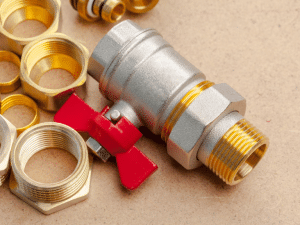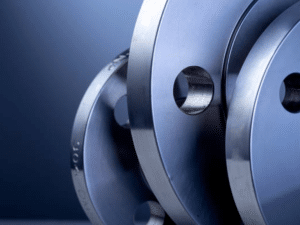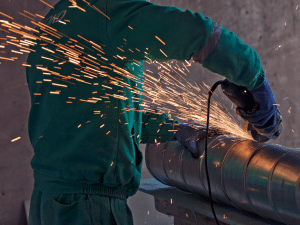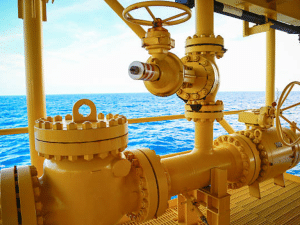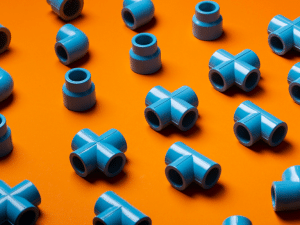Corrosion Protection Techniques for Welded Steel Pipes
Steel pipelines keep major industries like oil and gas, water systems, construction projects, and manufacturing plants running. But there’s one big enemy that threatens these pipelines: rust. When rust isn’t stopped, it makes systems work poorly, costs more money to fix, and makes welded pipes wear out too fast. That’s why industries put so much effort into fighting corrosion and keeping operations running smoothly.
This guide looks at what causes rust in welded pipes, the best ways to protect against it, and why working with reliable spiral welded pipe suppliers and trusted welded pipe supplier companies makes such a big difference.
Why Fighting Rust Really Matters in Welded Steel Pipes
Welded pipes are popular because they’re tough, don’t cost too much, and can handle high-pressure jobs. But they face some pretty harsh conditions, like:
- Wet air and humidity everywhere
- Saltwater damage in ocean projects
- Nasty chemicals in industrial plants
- Underground conditions that eat away at buried pipelines
When steel is exposed to water and air, rust starts growing. In the long run, this weakens the strength of the pipes, causing leaks, dirty water, or a complete breakdown of the system. Industries that rely on pipelines to transfer or move essential materials, protecting against rust is not just a smart move; it’s necessary
Common Types of Rust Problems in Welded Pipes
Before looking at protection methods, it helps to understand the different kinds of rust that attack welded pipes:
- Uniform Rusting – Even rust spreads across the surface when oxygen and moisture get to the steel.
- Pitting Rust – Small, deep holes that go through the pipe wall, often hard to spot until major damage happens.
- Galvanic Rust – Happens when welded pipes touch a different type of metal while water or chemicals are present.
- Crevice Rust – Found in tight spots like weld joints, seals, or under buildup where air can’t reach well.
- Stress Crack Rusting – Caused by pressure and harsh conditions working together, leading to cracks and breaks.
Knowing what type of rust threat exists helps choose the right protection method.
Corrosion Protection Techniques for Welded Steel Pipes
1. Protective Coatings and Linings
One of the most common ways to protect welded pipes is to cover them inside and outside with special materials.
- Epoxy Coatings: Work great for water pipelines, creating a wall between steel and moisture.
- Fusion Bonded Epoxy (FBE): Widely used in oil and gas pipelines, it fights off chemicals and scraping damage really well.
- Internal Pipe Coatings: Provide extra protection layers for buried pipelines using polyethylene or polypropylene.
- Cement Mortar Linings: Applied inside pipes, especially for water supply lines, to reduce internal rust and keep water clean.
Good quality coatings make pipelines last much longer and cut down repair costs by a lot.
2. Cathodic Protection (CP)
Cathodic protection ranks as one of the best methods for underground and underwater pipelines. It works by turning the steel pipe into the protected part of an electrical system.
- Sacrificial Metal Method: Uses zinc, magnesium, or aluminum pieces that rust away instead of the steel pipe.
- Powered Current System: Uses electricity and special anodes to provide non-stop protection for big pipeline systems.
This method works especially well for long-distance pipelines from spiral-welded pipe suppliers, where soil and water speed up rusting.
3. Anti-Rust Chemicals
In industries like oil and gas, special chemicals get added directly to the liquids moving through pipes. These chemicals create a safe protective film on the pipe’s inner walls, cutting down rust risks.
- Film-making chemicals for water systems
- Oxygen removers for boilers and steam lines
- Germ killers to control bacteria that cause rust
While they don’t replace coatings or cathodic protection, these chemicals add an extra safety layer.
4. Smart Material Choice and Quality Welding
Prevention starts right at the planning stage. Picking the right pipe material and making sure welding gets done properly can really cut down on rust problems.
- Alloy steels and stainless steels fight rust better than regular carbon steels
- Good welding practices reduce rust around pipe joints
- Heat treatment after welding lowers the stress that can lead to stress cracking
Working with a reliable welded pipe supplier ensures materials and welds meet industry rules, giving long-lasting strength.
5. Regular Checking and Upkeep
Even the best protection systems need watching. Advanced methods like sound wave testing, magnetic leak detection, and smart pipeline inspection tools help spot early rust signs.
Regular inspections help industries:
- Find weak spots before they become leaks
- Put new coatings where needed
- Replace damaged pipe sections quickly
Taking action early prevents expensive shutdowns and accidents.
How Spiral Welded Pipes Help Fight Rust
Spiral-welded pipes are used a lot in water systems, oil and gas transport, and building projects. Their spiral seam gives strong mechanical properties and allows for the making of large diameter pipes.
When bought from trusted spiral-welded pipe suppliers, these pipes often come with advanced coatings, cathodic protection readiness, and high welding standards. This makes sure pipes not only handle pressure well but also resist rust in tough environments.
Picking the Right Supplier for Rust-Fighting Welded Pipes
Fighting rust doesn’t just depend on methods used after installation; it starts with choosing the right supplier.
A dependable welded pipe supplier makes sure:
- Pipes meet international quality and safety rules
- Coatings and linings are applied using the latest technology
- Materials get tested for resistance in specific industrial conditions
- Custom solutions are provided based on project needs
By working with knowledgeable spiral-welded pipe suppliers, industries get access to technical know-how, product warranties, and long-term support for pipeline systems.
What’s Coming Next in Pipe Rust Protection
As industries move toward being more environmentally friendly, rust protection technologies are also changing:
- Smart coatings that can fix themselves when scratched or damaged
- Tiny particle technology for more efficient and eco-friendly protection
- AI computer systems that predict rust problems before they happen
These advances promise longer-lasting, safer, and more cost-effective welded pipe systems for important infrastructure.
The Bottom Line
Rust is among the most significant hurdles in industries that utilize welded pipes, but an issue seems to arise when rust control is poorly managed. Galvanizing, cathodic protection, proper material selection, and maintenance are all factors that can contribute to longevity in pipelines.
With all that said, any effective corrosion protection program really starts with quality products purchased from reputable spiral-welded pipe suppliers. With a dash of technology, a lot of experience, and just enough attention paid to the details, we can ensure our welded steel pipes will remain structurally sound, safe, and efficient for a long time.


